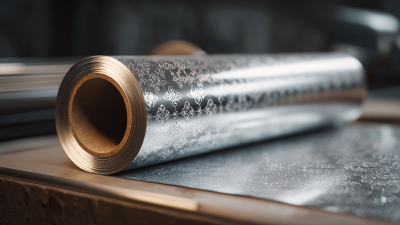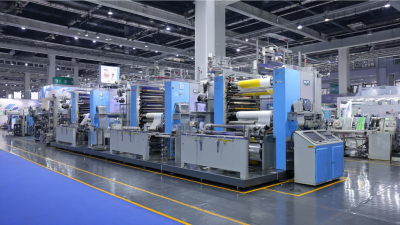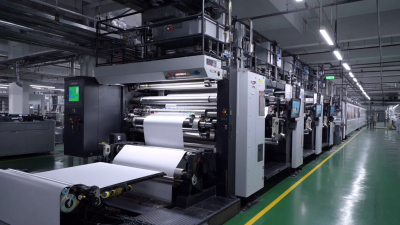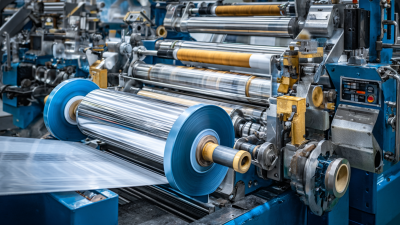Leave Your Message
-
Phone
-
Whatsapp
-
E-mail
Hot Foil Stamping is a captivating technique that has transformed the world of design, allowing creatives to add a touch of elegance and sophistication to their projects. This method, which involves applying a metallic or pigmented foil onto a surface using heat and pressure, opens up a realm of possibilities for artists, graphic designers, and crafters alike.
Whether you're looking to elevate your branding materials, create stunning invitations, or enhance packaging designs, mastering hot foil stamping can lead to stunning results that capture attention. In this guide, we will explore various aspects of hot foil stamping, from understanding its basic principles to uncovering advanced techniques that can truly unleash your creativity.
Prepare to dive into the innovative world of design as we unlock the secrets behind this mesmerizing technique, equipping you with the skills needed to transform your projects into eye-catching masterpieces.

Hot foil stamping is a time-honored technique that dates back to the 19th century, originally used for book covers and luxurious packaging. Over the years, it has evolved into a popular choice for adding a touch of elegance to various design projects. According to a recent industry report by Smithers Pira, the market for foil stamping is expected to grow at a rate of 4.5% annually, reflecting the increasing demand for unique and customizable packaging solutions. This technique involves using a heated die to transfer metallic foil onto a surface, creating stunning visuals that captivate audiences.
When considering hot foil stamping for your design projects, it's essential to understand its various applications. Whether you’re creating business cards, invitations, or luxury box packaging, the reflective quality of foil can elevate your work. **Tip:** Always select the right type of foil for your project; options range from matte to gloss, and even holographic finishes, which can significantly impact the final look.
Another crucial aspect to keep in mind is the design's intricacy. Complex designs may require more precision and finer dies, which can increase production costs. **Tip:** Simplifying your design can sometimes enhance its elegance and make the foil stamping process more efficient. By understanding these elements and their historical evolution, designers can unleash their creativity and create truly stunning projects that stand out in the competitive market.
| Technique | Description | Materials Used | Common Applications | Historical Insight |
|---|---|---|---|---|
| Flat Foil Stamping | Application of foil to a flat surface using heat and pressure. | Metallic foil, adhesive sheets, and custom dies. | Business cards, stationery, packaging. | Developed in the 19th century, it revolutionized decorative printing. |
| Debossing | Creating an inkless impression of the design into the substrate. | Cardstock, leather, and specialty papers. | Luxury packaging, book covers, and invitations. | Traditionally used in bookbinding, giving a classic charm. |
| Multi-Level Stamping | Combining different foil finishes and levels in one project. | Various foils, layered cardstock, and dies. | High-end products, limited edition items. | Evolved with modern printing technology, enhancing creativity. |
| Color Foil Stamping | Using colored foils for added visual impact. | Colored and metallic foils, adhesive, and cardstock. | Greeting cards, branding materials. | Became popular in the 20th century with advances in color printing. |
 Hot foil stamping is a transformative technique that adds a touch of
luxury and sophistication
to various design projects, from business cards to wedding invitations. To master this process, understanding essential tools and materials is critical. Key elements include a hot foil stamping machine, a variety of foil types, and precision dies. According to a recent report by Smithers Pira, the demand for decorative finishing technologies, including hot foil stamping, is projected to grow at a rate of
3.5%
annually, highlighting its increasing significance in the design industry.
Hot foil stamping is a transformative technique that adds a touch of
luxury and sophistication
to various design projects, from business cards to wedding invitations. To master this process, understanding essential tools and materials is critical. Key elements include a hot foil stamping machine, a variety of foil types, and precision dies. According to a recent report by Smithers Pira, the demand for decorative finishing technologies, including hot foil stamping, is projected to grow at a rate of
3.5%
annually, highlighting its increasing significance in the design industry.
When selecting your tools, consider investing in a high-quality hot foil stamping machine that offers adjustable temperature and pressure settings. This flexibility allows you to experiment with different materials such as paper, leather, and cardboard. Additionally, choosing the right foil is crucial; metallic foils typically provide a stunning shine, while matte options can offer a more subtle elegance.
Tips: Always test your setup on scrap material before applying it to your final project. This way, you can ensure the desired effect without risking a mistake on valuable work. Furthermore, keep your workspace organized by categorizing your foils and dies for easy access and efficiency during the stamping process. Engaging with these techniques will not only elevate your design projects but also unleash your creative potential.
Hot foil stamping is a captivating technique that elevates the elegance of design projects. To embark on your hot foil stamping journey, start with simple projects that allow you to grasp the basics while enjoying the creative process. According to the "2023 Print and Packaging Trends Report," over 60% of designers believe that foil stamping adds a level of sophistication that enhances brand perception. Begin by practicing on card stock or recycled paper, gradually developing your skills to apply foil to more complex materials.
Tips: When choosing foil, opt for colors that complement your design palette. Experiment with various textures and finishes—like matte or gloss—to add depth to your projects. A heat press with adjustable temperature controls can help ensure that your designs come out crisp and clean every time.
As you progress, consider incorporating foil stamping into wedding invitations, product packaging, or personalized stationery. A survey by the Specialty Graphic Imaging Association reveals that 75% of consumers are drawn to products with metallic finishes. Use this knowledge to infuse your projects with an element of allure, making them stand out in a crowded marketplace.
Hot foil stamping is a powerful technique that can elevate branding through its unique combination of texture, shine, and color. By applying metallic or pigment foils to various substrates, this process adds a luxurious touch that can be particularly impactful in branding materials. Companies looking to distinguish their identity can leverage hot foil stamping to create eye-catching logos, packaging, and promotional materials that leave a lasting impression. For instance, using gold or silver foil on a business card enhances its appeal, ensuring that it stands out in a competitive market.
Incorporating innovative design ideas with hot foil stamping can transform ordinary projects into extraordinary statements. Designers can experiment with different foils, textures, and layering techniques to create depth and visual interest. Combining foil stamping with other print methods, such as embossing or debossing, can produce unique tactile experiences that engage consumers. By thoughtfully integrating these techniques, brands can communicate their values and aesthetics more effectively, turning everyday interactions into memorable experiences that resonate with their audience.
In recent years, the foil stamping industry has witnessed a significant surge in popularity, driven largely by consumer preferences for unique and high-quality design elements. According to a 2022 market research report by Smithers, the global market for foil stamping is projected to reach $4.5 billion by 2026, growing at a compound annual growth rate (CAGR) of 7.2%. This growth is attributed to the increasing demand for premium packaging and personalized products in sectors such as cosmetics, luxury goods, and greeting cards.
Furthermore, a survey by Package Insight indicates that 68% of consumers are willing to pay more for products that feature distinctive finishes like foil stamping, showcasing a clear trend towards embellishments that enhance brand identity and overall consumer experience. This reflects a broader shift in consumer behavior, where aesthetics and tactile experiences play pivotal roles in purchasing decisions. As designers and brands continue to innovate and harness the potential of foil stamping techniques, understanding these market trends and preferences becomes crucial for creating compelling and impactful design projects.







